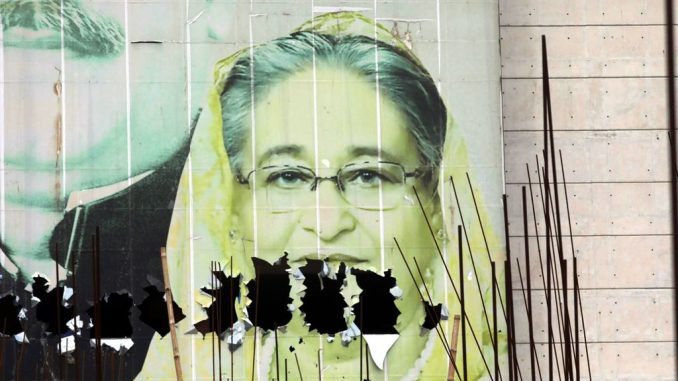
Parliament in Bangladesh dissolved after Prime Minister Hasina flees
A day after the resignation of Prime Minister Sheikh Hasina, parliament in Bangladesh was dissolved. That was an important demand of the demonstrators who have been protesting against the government for weeks. Student leaders had threatened to continue the protests if parliament remained in session.
The demonstrators are also against an interim government led by the military. They demand a prominent role for banker and Nobel Prize winner Muhammad Yunus. According to the BBC, he is willing to take on that task. Yunis is internationally known as the founder of microcredit to people who do not have access to large loans.
Bangladeshi President Mohammed Shahabuddin has promised in a televised speech that elections will be held as soon as possible. He also announced that demonstrators who have been arrested in the past period will be released. He also reported that Hasina’s previous prime minister and arch-enemy, Khaleda Zia, had been released. This would also apply to other political opponents of the old regime.
400 dead
Protests in Bangladesh began last month when students from the University of Dhaka took to the streets with banners to express their dissatisfaction over a new job quota. More than half of all government jobs must be distributed among certain groups according to that quota. For example, a third goes to families of veterans who fought for the country’s independence in 1971. Students feared that this measure would make it even more difficult to find a job.
They also saw it as a way for Prime Minister Hasina to strengthen the position of her supporters, because she herself is the daughter of one of the country’s best-known independence fighters.
After a peaceful start, the army and police intervened violently. More than 10,000 students were arrested. A total of about 400 demonstrators were also killed. Yesterday, the day of Hasina’s resignation, was the bloodiest day. According to local sources, 100 people were killed in violent clashes, although the latter figures have not been confirmed by the police.
Safehouse
As the demonstrations and violence increased, the protest broadened and demands were made for Hasina to resign. She has been in power for the past 15 years and, according to critics and human rights organizations, led the country in an increasingly autocratic manner. She won the elections again in January, but the opposition had already been sidelined. Human rights organizations raised the alarm last year about another major protest in the country. Even then there was violence, torture and arbitrary arrests of demonstrators.
After resigning, Hasina was taken to India by a military plane yesterday. According to Indian media, she has tried to apply for asylum in the United Kingdom, but because the terms have not been agreed, she is still in India.

Be the first to comment